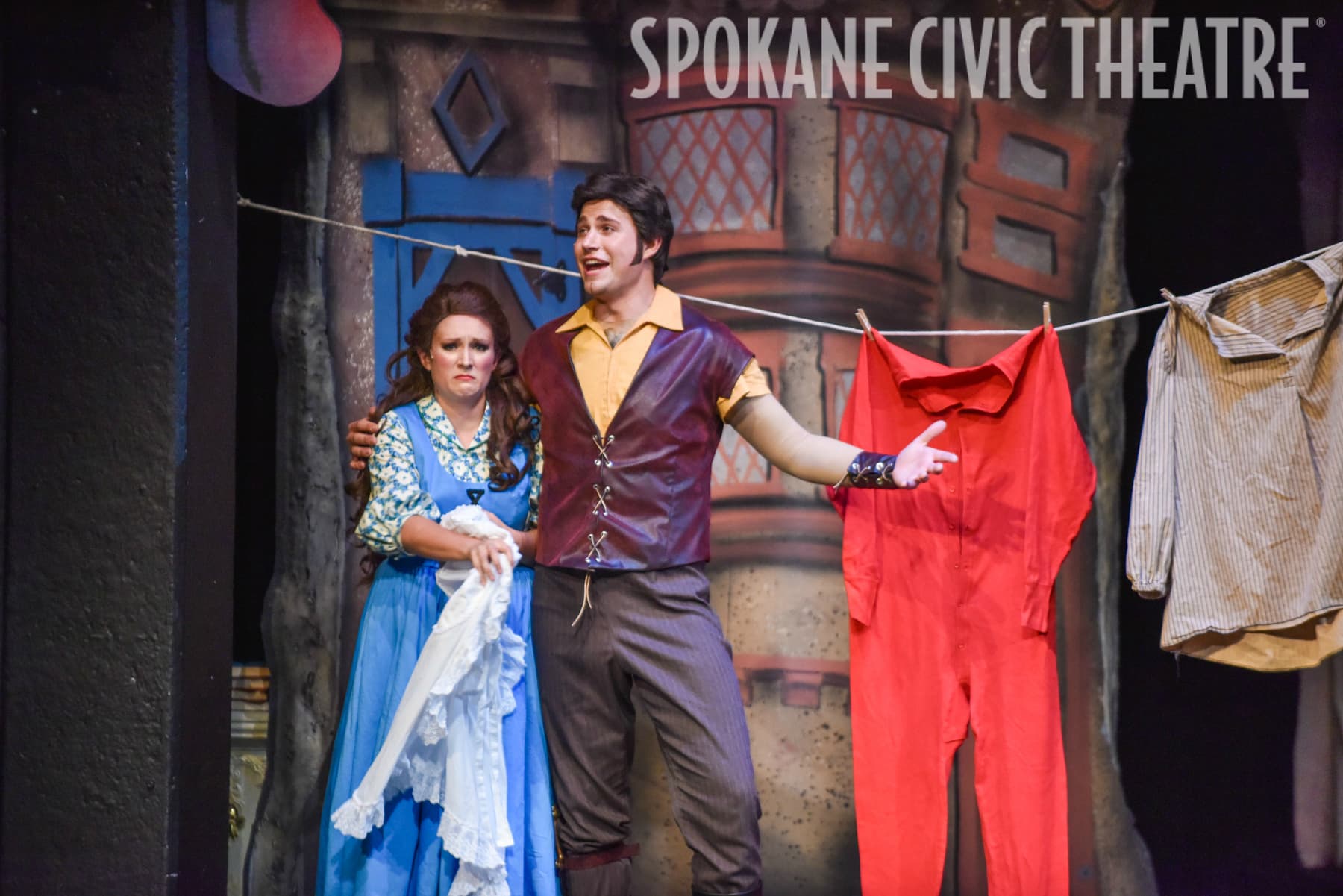
M.Hoffman: Tell me more about your process of design for Beauty and The Beast!
Berry: Process is very important in the journey of costume design. The research, the vision of the production as a whole, and the resources that are available all play a part in my process. I didn’t want to make this look like the cartoon movie but I fully embraced the fact that there are some elements that I just had to bring to the stage that the audience was expecting, only I gave them my spin or twist as the designer. There had to be the famous gown and I found a very rich gold crepe back satin that would hold and reflect light and drape in a graceful manner. Belle’s gown was like it’s own character.
I spent all of July designing and engineering the enchanted characters, china plates, napkins, Salt and Pepper, and of course the very tall forks. All of these costumes had to look like these objects, be worn by actors, and then be worn to dance. The dancing is so important in this show and Heidy Cartwright has a way of making actors really good dancers. We had many talks about the designs and I made some prototypes so the space on stage and movement was not a surprise come first dress rehearsal. I made prototypes of the wardrobe and the clock from the dimensions the rental company sent me. The actors got the chance to work in those for a few weeks before the real ones arrived.
Hoffman: Tell me more about the extra special details that went into Beauty and The Beast?
Berry: Details are important in my designs and I would have liked to have added more but there is only so much time. Bridget, a local artist that had worked here at the Civic for some time, painted the red roses on the pointe shoes. My intern, Isabella painted the china plates and napkins to my specs beautifully. The forks were the most complicated of the enchanted world and so worth the time and energy. One of my past GU students, now good friend, came for a visit and stepped in to add the details on the fork handles.

Hoffman: I really enjoy the Gaston character. Tell me more about his costume.
Gaston‘s needs were pretty involved but from the stage probably don’t read that way. I made him a body shirt to cover his tattoo art and of course he had to have a hairy chest. To make that happen I bought a natural chest hair patch and sewed it to the shirt.

Hoffman: What was your favorite piece to design?
Berry: I really had fun creating this show’s costumes and if I had to pick one favorite, which is very difficult, it was Babette the feather duster. She too had a prototype for rehearsals for weeks since she had to tango.
Hoffman: Keeping the characters looking good night after night doesn’t just happen magically. Tell us more about the process of maintaining, washing and repairing clothes during a show.
Berry: Musicals always require weekly maintenance; no one likes wearing dirty costumes. One of the challenges is keeping all the pieces looking like they did opening night during a five-week run. Not easy. I do the best I can, try to anticipate what might happen, and what to have as a back up.

Hoffman: Thanks for sharing some secrets of the costuming process! Anything else you want us to know?
Berry: I think about each actor as I am creating their costume and it brings me great joy when they put them on the first time and walk on stage a changed person. I enjoy being a part of the story telling. Theatre is story telling. The actor and the audience deserve my best work and that is what I strive for in all the shows I design and build.
PHOTO CREDIT: CHRIS WOOLEY AT HEADS AND TAILS PHOTOGRAPHY